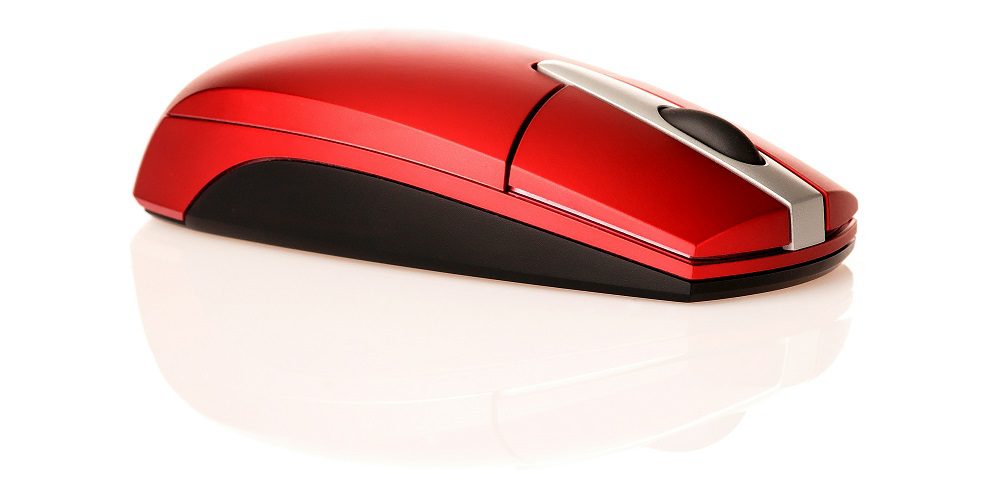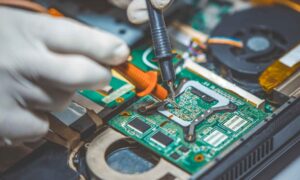Introduction:
In the vast realm of computing, the mouse stands as a humble yet indispensable peripheral that has revolutionized the way we interact with computers. Its journey from an experimental device to an essential tool in our daily computing endeavors is a testament to technological evolution. In this comprehensive guide, we will delve deep into the intricacies of what a mouse is, its history, functionalities, types, and its crucial role in the world of computers.
The Origins of the Computer Mouse
To truly grasp the significance of the mouse, it’s essential to explore its origins. The mouse was born out of necessity and ingenuity at the Stanford Research Institute in the 1960s. Inventors Douglas Engelbart and Bill English developed the first prototype, consisting of two wheels perpendicular to each other, detecting motion on two axes.
This revolutionary device marked a departure from traditional methods of computer interaction, paving the way for the graphical user interfaces (GUIs) we use today. Engelbart’s “Mother of All Demos” in 1968 showcased the mouse alongside other groundbreaking technologies, solidifying its place in computing history.
Anatomy of a Mouse
Understanding the anatomy of a mouse is crucial to deciphering its functionalities. A standard mouse comprises several components, each contributing to its overall performance. These include:
1. Shell: The outer casing that houses the internal components.
2. Buttons: typically a left button, a right button, and a clickable scroll wheel.
3. Sensor: Optical or laser sensors detect movement and translate it into cursor motion.
4. DPI (Dots Per Inch) Settings: Adjustable settings that control the sensitivity of the mouse.
5. Connectivity: wired or wireless options, utilizing USB, Bluetooth, or other technologies.
Delving into the intricacies of each component allows users to make informed decisions when choosing a mouse tailored to their specific needs.
The Functionality of a Computer Mouse
The primary function of a mouse is to provide a user-friendly interface for interacting with a computer. This section will explore the core functionalities that make the mouse an essential tool in computing:
1. Cursor Movement: The mouse translates physical movement into on-screen cursor movement, allowing users to navigate the graphical user interface effortlessly.
2. Clicking: The left and right buttons serve as the primary means of interaction, enabling users to select, open, or execute various actions.
3. Scrolling: The scroll wheel facilitates smooth navigation through documents, web pages, and other content.
4. Contextual Menus: Right-clicking opens contextual menus, providing quick access to a range of options depending on the software or application in use.
5. Drag and Drop: This fundamental feature allows users to move files, icons, or text by clicking, holding, and dragging them to a new location.
Types of Computer Mice
The world of computer mice is diverse, with various types catering to different preferences and use cases. This section will explore the most common types:
1. Standard Wired Mouse: The traditional mouse is connected to the computer via a USB cable, offering reliability and minimal latency.
2. Wireless Mouse: Utilizing Bluetooth or RF technology, wireless mice provide greater freedom of movement, eliminating cable clutter.
3. Gaming Mouse: Engineered for gamers, these mice often feature customizable buttons, high DPI settings, and ergonomic designs for prolonged use.
4. Ergonomic Mouse: Designed with user comfort in mind, ergonomic mice reduce strain and promote natural hand positions.
.5. Trackball Mouse: Reversing the traditional mouse design, trackball mice have a stationary body and a movable ball, allowing users to control the cursor by rotating the ball.
Advancements in Mouse Technology
The evolution of mouse technology has witnessed remarkable advancements over the years. From the early ball-based mice to the modern optical and laser sensors, technological innovations have enhanced performance and precision. This section will explore key advancements:
1. Optical Sensors: Replacing the traditional ball mechanism, optical sensors use LED or infrared light to track movement, offering greater accuracy and reliability.
2. Laser Sensors: Laser mice take precision to the next level, offering higher DPI settings and smoother tracking on various surfaces.
3. Wireless Technology: The advent of wireless technology has freed users from the constraints of cables, providing greater flexibility in movement.
4. Programmable Buttons: Gaming and productivity mice often feature programmable buttons, allowing users to customize functions based on their preferences.
5. Gyroscope and Accelerometer: Some mice integrate gyroscopes and accelerometers for additional motion tracking, making them ideal for specific applications and gaming scenarios.
Choosing the Right Mouse for You
Selecting the right mouse involves considering various factors, including personal preferences, intended use, and ergonomic design. This section will provide a guide to help users make informed decisions when purchasing a mouse.
1. Consider Your Usage: Gaming, productivity, or general use—different mice cater to specific needs. Assess your primary use to determine the features essential for your activities.
2. Ergonomics Matter: A comfortable mouse reduces the risk of strain during prolonged use. Consider the size, shape, and grip style that align with your hand and preferences.
3. DPI Settings: For precise cursor control, opt for a mouse with adjustable DPI settings, allowing you to customize sensitivity based on your tasks.
.4. Connectivity: Choose between wired and wireless options based on your preference for responsiveness, convenience, and freedom of movement.
.5. Additional Features: Assess additional features such as programmable buttons, customizable lighting, and compatibility with software that enhance your overall user experience.
Troubleshooting Common Mouse Issues
Even the most advanced mice may encounter issues from time to time. This section will cover common problems users may face and provide troubleshooting tips:
1. Cursor Drift: If your cursor moves uncontrollably, check for dust or debris on the sensor. Cleaning the sensor with a soft cloth usually resolves the issue.
2. Unresponsive Buttons: In the case of unresponsive buttons, ensure the mouse is properly connected or try changing the batteries if using a wireless mouse.
3. Erratic Movement: An erratic cursor could be a result of interference with wireless mice. Consider changing the mouse’s location or checking for interference sources.
4. Connectivity Issues: For wireless mice, check the batteries, reconnect the mouse, or try using a different USB port or Bluetooth connection.
5. Driver Updates: Ensure your mouse drivers are up-to-date to benefit from the latest features and bug fixes. Visit the manufacturer’s website for driver updates.
Conclusion:
The computer mouse is a remarkable piece of technology that has come a long way since its inception. From a simple pointing device to a multifunctional tool, the mouse continues to be an integral part of our daily computing experience. Understanding its history, anatomy, functionalities, and the array of types available empowers users to make informed choices, enhancing their overall computing experience. As technology continues to evolve, the humble mouse will undoubtedly remain a cornerstone of human-computer interaction, bridging the gap between the digital and physical worlds.



































